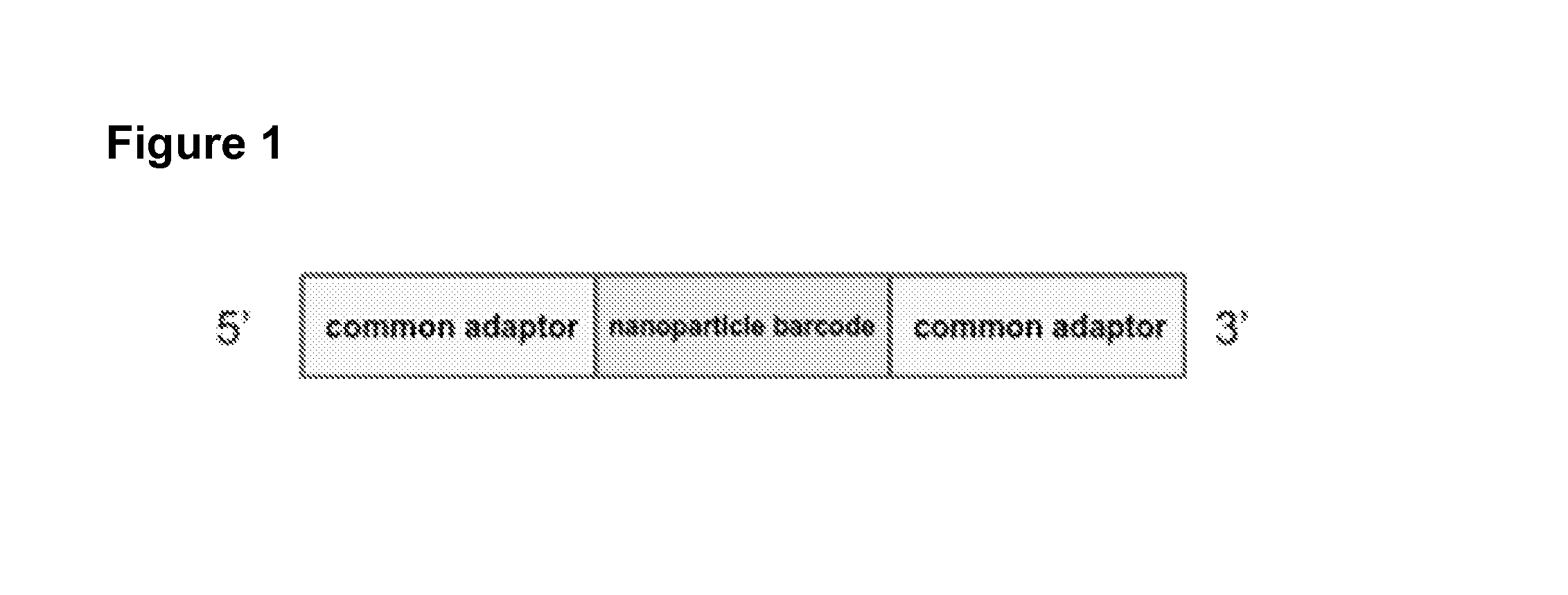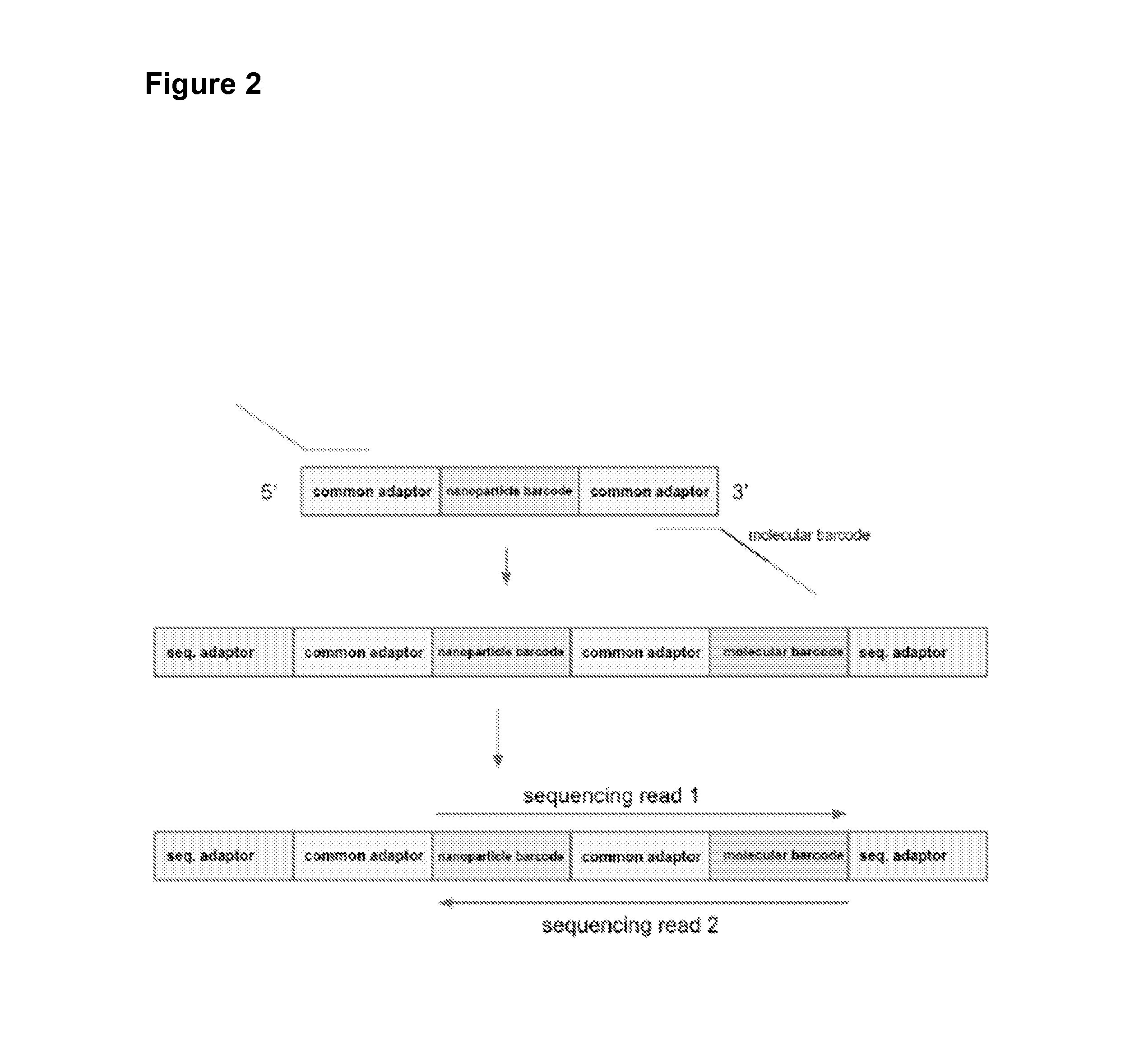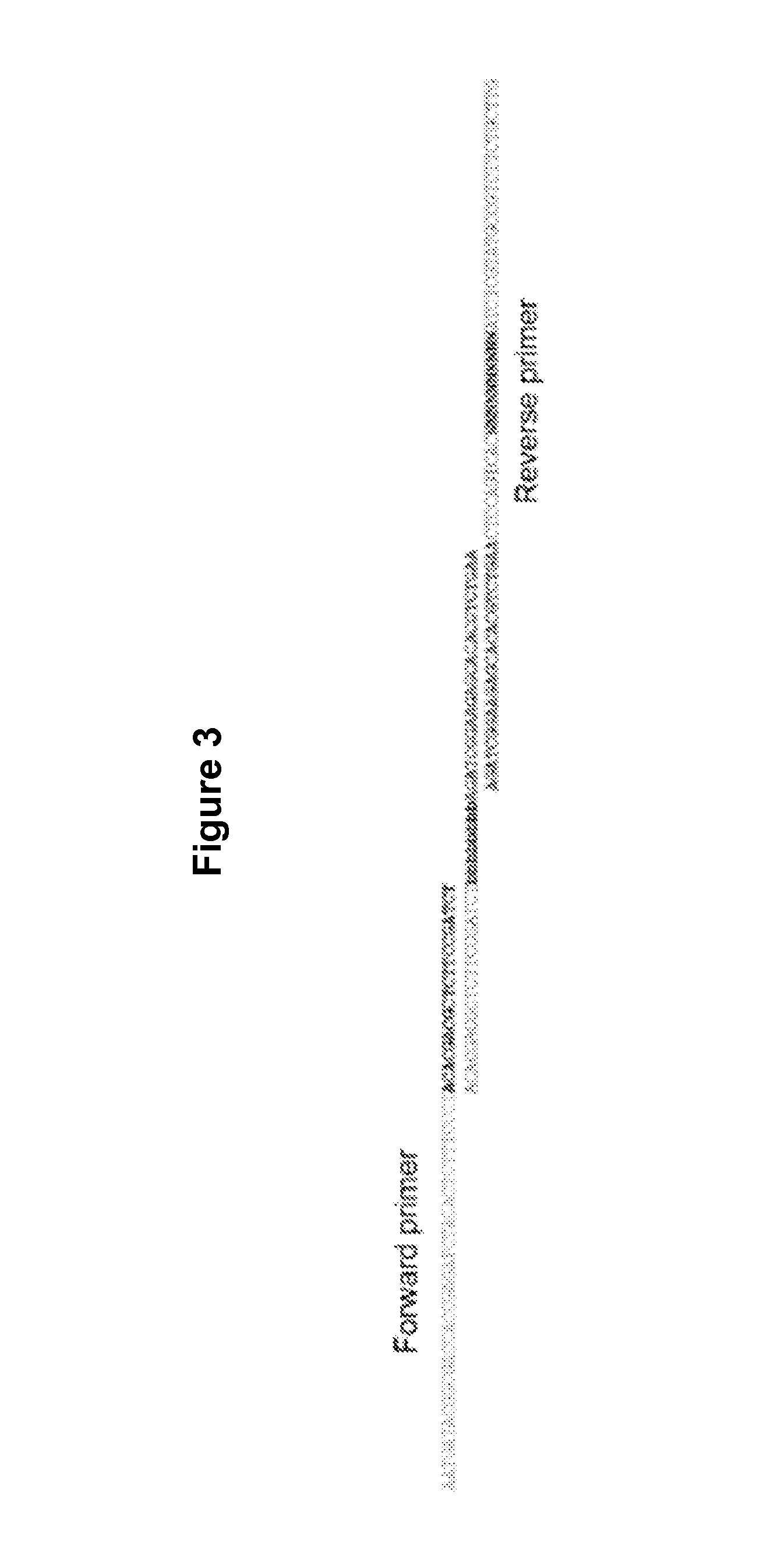Methods of tagging particles for multiplexed functional screening
- Summary
- Abstract
- Description
- Claims
- Application Information
AI Technical Summary
Benefits of technology
Problems solved by technology
Method used
Image
Examples
example 1
Nucleic Acid Based Approaches
[0075]DNA (single or double stranded) or RNA, or XNA (xenonucleic acids, made with synthetic nucleic acids and capable of information storage like DNA or RNA) molecules containing a unique sequence (i.e., a unique tag) could be embedded non-covalently or covalently within the particle polymer matrix or core. For example, the negatively charged nucleic acids can be incorporated within a poly-electrolyte multilayer (i.e., a layer-by-layer system; see Poon et al., Nano Lett. 11:2096-2103, (2011)). Alternatively, nucleic acids could be covalently attached to the surface of the particle or hybridized to a complementary sequence attached to the surface of the particle. The surface can be functionalized with appropriate chemical groups to bind (covalently or non-covalently) with groups on the nucleic acid. For example, —COOH groups on the surface reacting with —NH2 functionalized DNA; or streptavidin on the surface binding to biotinylated DNA; or a common nucle...
example 2
Peptide Based Approaches
[0093]Similar to the strategy used for nucleic acids, but short peptides, peptoids, and specific patterns of isotope labeling are used to encode particle identity. Mass spectrometry could then be used as a read-out for particle identity and abundance (see, for example, Zhou et al., ACS Chemical Biology, 2(5):337-46 (2007)).
example 3
Optical Encoding
[0094]Different combinations of fluorescent dyes, quantum dots, nanodiamonds, or FRET systems (using components with sufficient spectral separation and unique optical properties) could be embedded within or covalently attached to the surface of particles. The optical properties of the selected particles can then be read using a flow cytometer or a microscope for identification (see, for example, Han et al., Nat Biotech. 19:631-35 (2001); Xu & Bakker, Anal Chem. 79:3716-23 (2007); Pregibon et al., Science 315:1393-96 (2007)).
PUM
| Property | Measurement | Unit |
|---|---|---|
| Chemical properties | aaaaa | aaaaa |
| Mass | aaaaa | aaaaa |
| Concentration | aaaaa | aaaaa |
Abstract
Description
Claims
Application Information
 Login to View More
Login to View More - R&D
- Intellectual Property
- Life Sciences
- Materials
- Tech Scout
- Unparalleled Data Quality
- Higher Quality Content
- 60% Fewer Hallucinations
Browse by: Latest US Patents, China's latest patents, Technical Efficacy Thesaurus, Application Domain, Technology Topic, Popular Technical Reports.
© 2025 PatSnap. All rights reserved.Legal|Privacy policy|Modern Slavery Act Transparency Statement|Sitemap|About US| Contact US: help@patsnap.com



